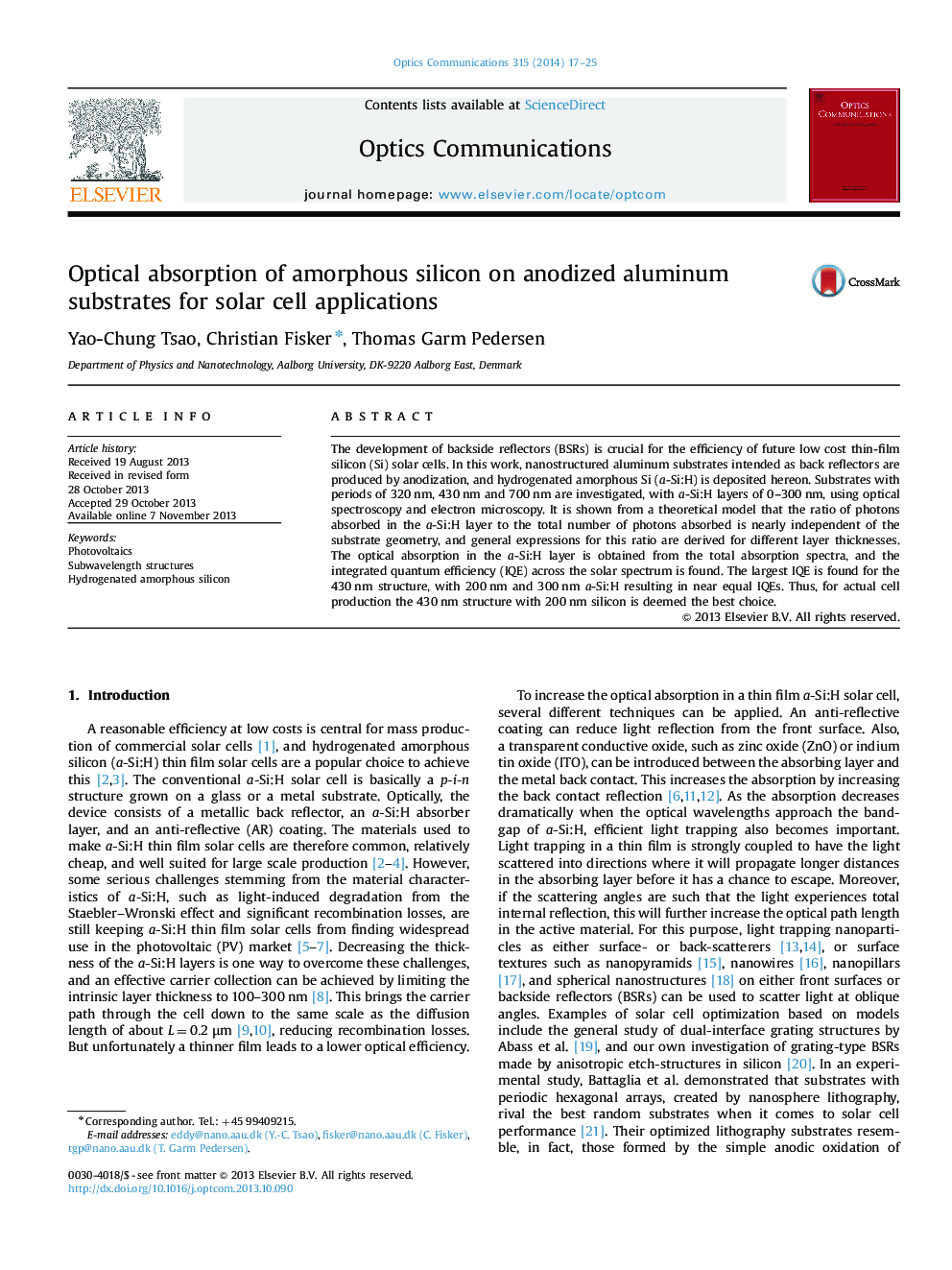| Article ID | Journal | Published Year | Pages | File Type |
|---|---|---|---|---|
| 1534901 | Optics Communications | 2014 | 9 Pages |
The development of backside reflectors (BSRs) is crucial for the efficiency of future low cost thin-film silicon (Si) solar cells. In this work, nanostructured aluminum substrates intended as back reflectors are produced by anodization, and hydrogenated amorphous Si (a-Si:H) is deposited hereon. Substrates with periods of 320 nm, 430 nm and 700 nm are investigated, with a-Si:H layers of 0–300 nm, using optical spectroscopy and electron microscopy. It is shown from a theoretical model that the ratio of photons absorbed in the a-Si:H layer to the total number of photons absorbed is nearly independent of the substrate geometry, and general expressions for this ratio are derived for different layer thicknesses. The optical absorption in the a-Si:H layer is obtained from the total absorption spectra, and the integrated quantum efficiency (IQE) across the solar spectrum is found. The largest IQE is found for the 430 nm structure, with 200 nm and 300 nm a-Si:H resulting in near equal IQEs. Thus, for actual cell production the 430 nm structure with 200 nm silicon is deemed the best choice.
